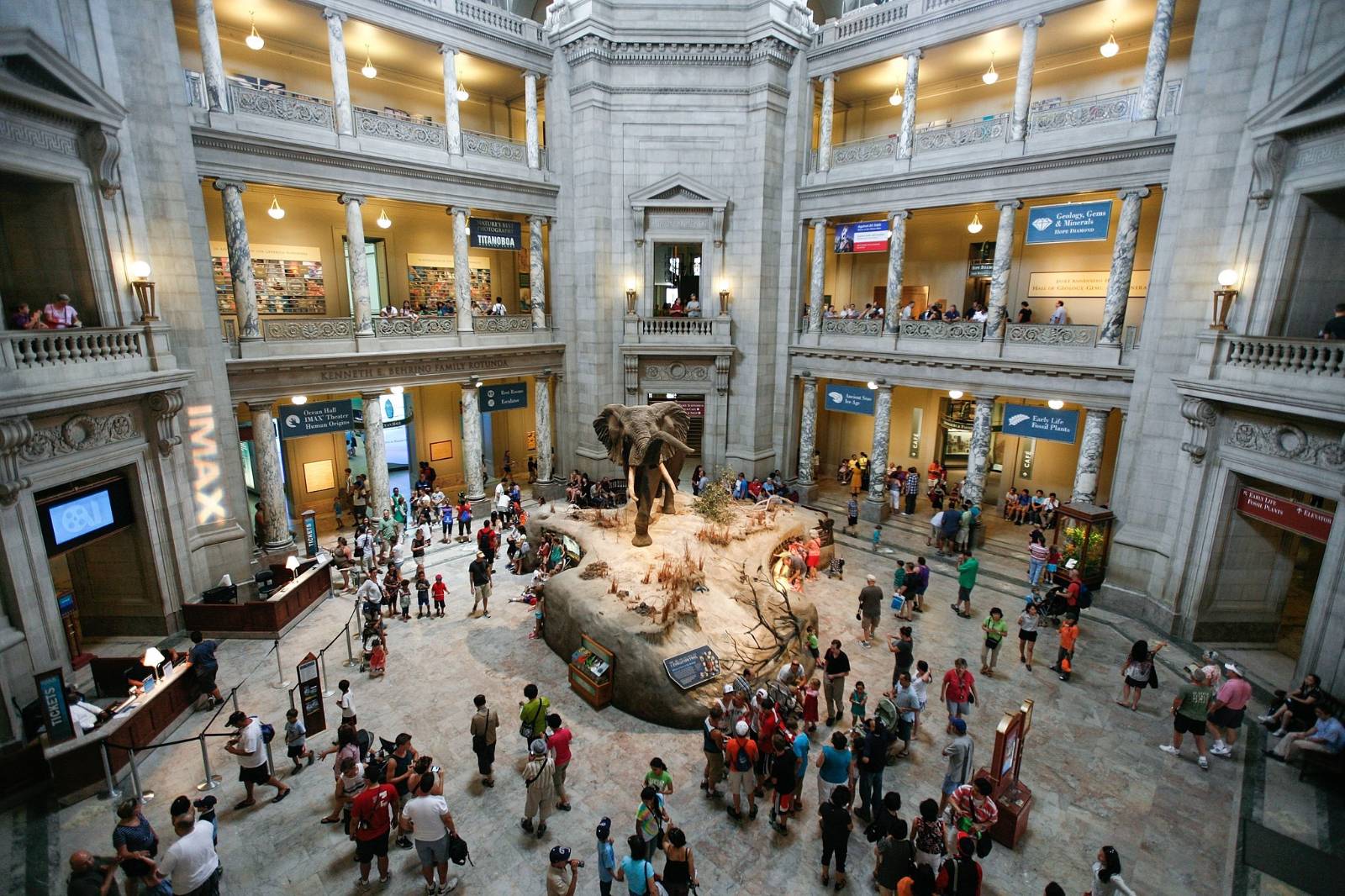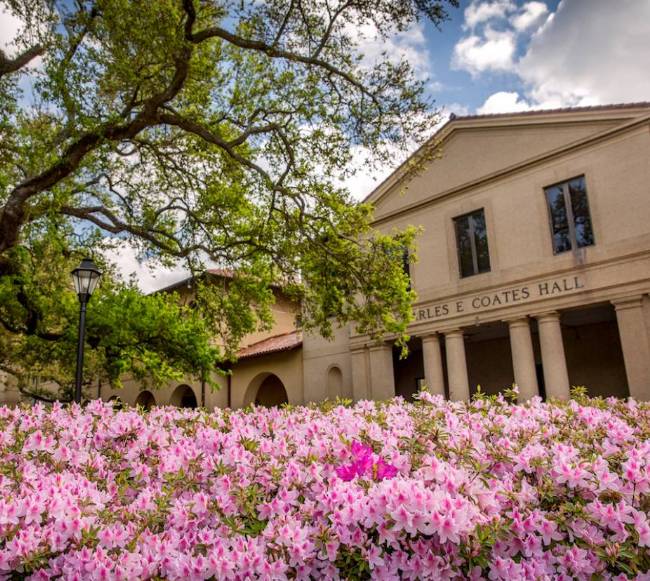How Climate Change is Impacting Galleries, Libraries, Archives and Museums
January 05, 2023

The Smithsonian Institution's National Museum of Natural History is one of the more than 92,000 galleries, libraries, archives and museums, or GLAMs, that LSU researchers will incorporate into a new project that addresses climate change impacts on these U.S. cultural and information repositories.
– Photo: Alex Proimos, Smithsonian Institution National Museum of Natural History
BATON ROUGE – Cultural heritage institutions, including galleries, libraries, archives and museums, or GLAMs, are being impacted by climate change. About 56 percent of these institutions reported increased damage to collections due to water or moisture between 2017-2019. Of that damage, about 10 percent was the result of natural disasters. To further understand the impact of climate change on these cultural and information repositories, the Institute of Museum and Library Services based in Washington, D.C. has awarded a grant to LSU School of Library & Information Science Associate Professor Edward Benoit III and LSU Department of Geography & Anthropology Associate Professor Jill Trepanier with collaborator Arizona State University’s School of Sustainability Associate Professor Jennifer Vanos. The project titled, “PROTECCT-GLAM: Providing Risk of The Environment’s Changing Climate Threats for Galleries, Libraries, Archives & Museums,” is funded over three years with a total of $473,146.
“I am particularly excited about working with those in the Library & Information Science field because I think we can show how interdisciplinary projects can be extremely beneficial to the public. By pairing expertise from vastly different fields, it allows us to answer some of the most difficult questions related to climate change threats and the needs of GLAMs that cannot be answered without the help of multiple scientists. After all, two heads are better than one,” said Trepanier, who is an extreme weather expert.
The IMLS award was part of the National Leadership Grants. This project is one of 39 funded proposals of 139 applications this year. LSU, in partnership with Arizona State University, will develop a national categorical climate change risk assessment scale for GLAMs. Now more than ever, cultural heritage institutions must assess their unique climate change-related threats to their collections and missions as part of their overall disaster and emergency management plans. According to the 2019 Heritage Health Information Survey, 58 percent of institutions do not have a disaster plan with 75 percent lacking both a plan and staff training to implement a plan.
“Understanding the array of potential impacts from weather extremes that are being exacerbated by climate change is vital for protecting these valuable assets within GLAMs. We know that infrastructure is at risk during such events, and this work will enable us to project potential impacts to GLAMs spatially and by hazard type for advanced preparation and prevention efforts,” Vanos said.
The research team will use geographic information system analysis to identify GLAM-specific risks, including tropical cyclone wind and/or flooding damage, inland precipitation and extreme heat signatures. They will use further statistical estimation of risk and visualization to develop a comprehensive risk assessment scale that will allow institutions to properly identify their climate change-related risks, create emergency management plans, develop short- and long-term mitigation plans and prioritize funding opportunities.
The project will leverage a target group of more than 92,000 cultural heritage intuitions within the United States including art museums, children’s museums, history museums, natural history museums, science museums, zoos and nature centers, historical societies, historical sites, college and university archives, community archives, corporate archives, governmental archives, religious archives, tribal archives, academic libraries, public libraries, school libraries, special libraries and government libraries.
The project team will make results publicly available and GLAMs nationwide will benefit from this project. During the final year of the project, the research team will host a national institute to further identify climate change challenges for GLAMs and prioritize future research.
“The PROTECCT-GLAM project builds off previous research within each effective field and will create a unified approach for institutions to address their specific risks. Cultural heritage institutions can utilize this information to better prioritize future projects and requests needing additional funding to preserve and protect our cultural heritage. I am particularly excited to include more than 25 undergraduate and graduate students in the research process to give them hands-on research experience. The participating students come from both the Library & Information Science and climate-science fields and will benefit from the interdisciplinary collaboration,” Benoit said.
About the LSU College of Humanities & Social Sciences
The LSU College of Humanities & Social Sciences positions students, faculty, and staff to be visionary leaders in their respective fields, a tradition of excellence that began with the college’s inception in 1908. For more news and information about the LSU College of Humanities & Social Sciences, visit hss.lsu.edu.
Like us on Facebook (@LSUHSS) or follow us on Twitter (@LSUHSS) and Instagram (@lsu_hss).
About the LSU College of Human Sciences & Education
The College of Human Sciences & Education (CHSE) is a nationally accredited division of Louisiana State University. The college is comprised of the School of Education, the School of Kinesiology, the School of Leadership & Human Resource Development, the School of Library & Information Science, the School of Social Work, and the University Laboratory School. These combined schools offer 8 undergraduate degree programs, 18 graduate programs, and 7 online graduate degree and/or certificate programs, enrolling more than 1,900 undergraduate and 1,120 graduate students. The College is committed to achieving the highest standards in teaching, research, and service and is committed to improving quality of life across the lifespan.
For more information, visit the College of Human Sciences & Education.
About the LSU School of Library & Information Science
The LSU School of Library & Information Science (SLIS) provides a 100 percent online prestigious education in library and information science. It is the home of the Master of Library and Information Science, which is the only program accredited by the American Library Association in the state of Louisiana. SLIS also offers a dual degree with the Department of History, an undergraduate minor, and three graduate certificate options. SLIS is a member of the iSchools, a group of Information Schools dedicated to advancing the information field. SLIS is part of the LSU College of Human Sciences & Education. For more information, visit the School of Library & Information Science.
About the School of Sustainability, Arizona State University
The School of Sustainability at Arizona State University is part of the new College of Global Futures. The school is addressing some of the most critical challenges of our time, with a focus on finding real-world solutions to environmental, economic, and social challenges. The School’s course of study emphasizes experiential learning, research with faculty, corporate and K-12 work, community service, and leadership development. The knowledge and solutions that are created today within the school will shape our quality of life as well as future generations to make our world more sustainable. For news and more information visit https://schoolofsustainability.asu.edu.


